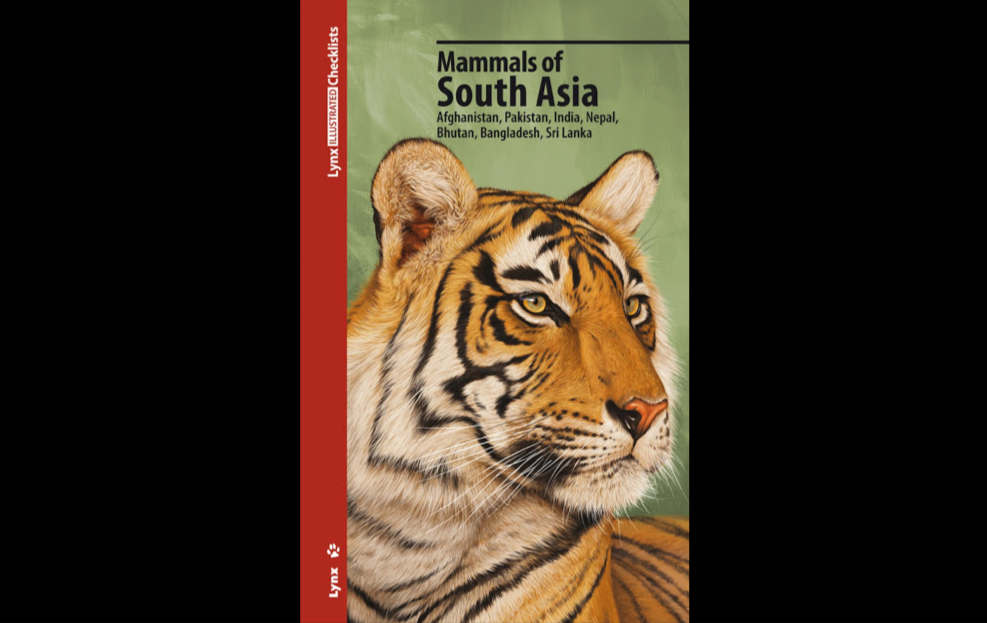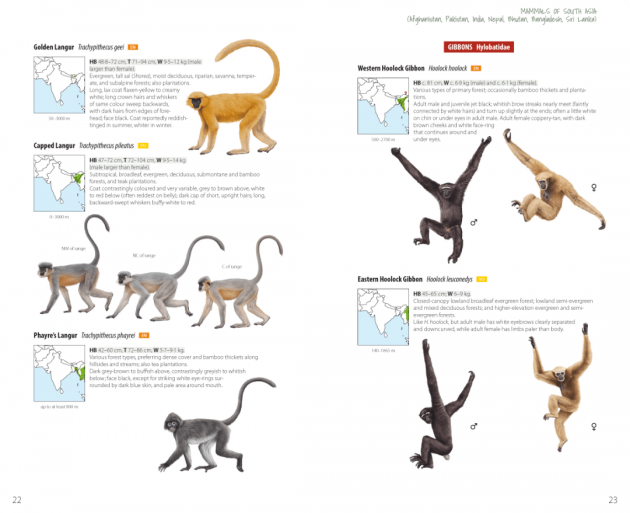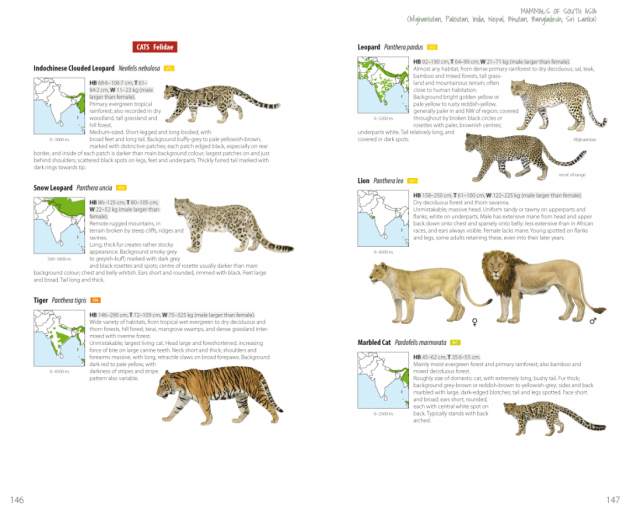
I was lucky to visit India several times, but as a keen birder I carried along only a bird book, and even upgraded it to a new edition between the trips. Ahead of the first trip, I wasn’t thinking much about mammals, and yet, you cannot miss them, from Nilgais near villages to Indian Flying Foxes in town centres, not to mention those ubiquitous and irresistibly cute Palm Squirrels eating seeds left for parakeets. On that first trip, I even saw some of the last 500 (Asiatic) Lions! I clearly needed a mammal book.
Beside India, Lynx Illustrated Checklist of the Mammals of South Asia covers Afghanistan, Pakistan, Nepal, Bhutan, Bangladesh and Sri Lanka. It also covers Andaman, Nicobar and Laccadive islands. Despite depicting 540 species/56 families, it is a lightweight book of 173 pages, easy to pack and carry.
Mammals of South Asia follows the latest taxonomy, describes all the species recorded within the region and provides a range map for each species. The introduction is short (5 pages) and includes a map of the covered region, as well as a 2-page table of better-known national parks and mammals for which the parks are known. The following 152 pages are the checklist proper, containing 3 to 4 species per page, with mostly one or, where needed, two illustrations per species, exceptionally three, a concise text on its Red List status, measurements (size), habitat and description of the species, followed by a range map. The checklist ends with the references and the index of both English and scientific names (another 9 pages).

This book is part of the Lynx Illustrated Checklists collection created from the wealth of data, illustrations and maps compiled for the Handbook of the Mammals of the World series which has been distilled into portable books that can be easily carried into the field.
Strictly speaking, Mammals of South Asia is not a field guide, because some larger groups (rodents, bats) cannot be identified down to a species level following the concise descriptions and a single illustration. Still, there should be no problem with larger species that allow for longer observation time (e.g. monkeys, deer, gazelles, etc.). Larger species, that is, excluding dolphins and whales. I may have very limited experience with dolphins and no experience with whales, but the illustrations show the entire animal in the way only divers can see it, without a second illustration of the tail shape, something whale-watchers can actually spot from a boat.
Similar with bird books, the maps are as accurate as can be, but do not forget that they are showing our knowledge of mammal distributions, rather than their true ranges. For example, it is widely known among local naturalists that both Northern (five-stripped) and Indian (three-striped) Palm Squirrels are present in Gujarat, yet the range map indicates that only the Northern should be expected, leading visitors to ascribe all their sightings to that species and completely overlook the Indian Palm Squirrel.

One issue puzzles me, the inclusion of those unidentifiable groups, such as bats, 39 pages of them (and this comes from a former caver who actually likes bats), also mice, rats, shrews and similar, which you aren’t likely to see (don’t trust action films) and are even less likely to ID? Most mammal guides aimed at wildlife watchers (and not scientists) tend to cover small and cryptic species as a group only, not going to a species level. There is no definitive answer which approach is better, but this checklist’s claim to fame is that is the first book to describe and illustrate all mammal species found in the region. To defend the editors’ choice, many of them are highly localised, which could further ease their ID.
Mammals of South Asia is a beautifully illustrated handbook to take with you into any of those fascinating, wildlife-rich countries, and if mammals aren’t your primary interest, you will be thankful that it weighs only 400 g. Highly recommended.
Mammals of South Asia (Paperback)
Afghanistan, Pakistan, India, Nepal, Bhutan, Bangladesh, Sri Lanka
Pages 173
Dimensions 14 × 22.8 cm
Weight 0.4 kg
ISBN 978-84-16728-27-5
Published in June 2020
Published by Lynx Edicions – Lynx Illustrated Checklists Collection











Looking forward to get one of these.